Share
Art for Social Change: How This Foundation is Helping Amplify Voices
With the rise of protests and rallies across the globe, it’s quite possible you’ve seen artwork from The Amplifier Foundation without even kn...
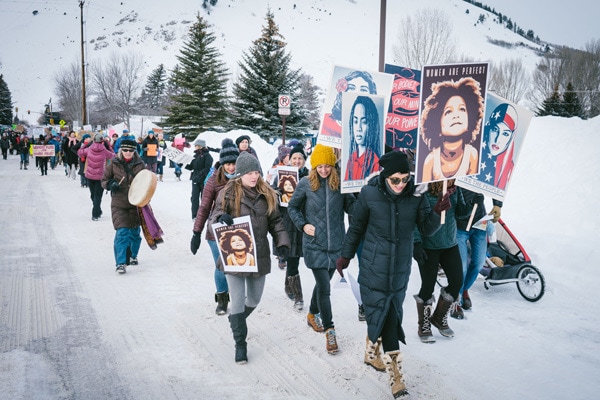
With the rise of protests and rallies across the globe, it’s quite possible you’ve seen artwork from The Amplifier Foundation without even knowing it. The Foundation, run by photographer Aaron Huey, has one central goal: “To amplify the voices of grassroots movements through art and community engagement.” In short, to use art for social change.
So how do they do it? They commission and distribute artwork that can raise awareness for important social justice issues. Women’s rights, environmental protection, immigration, criminal justice reform – you name it. Says Aaron, “Our goal is to flip artists into activists and observers into participants.” To do this, whey work closely with artists, activists and nonprofits to distribute art and provide free downloadable graphics directly on their website.
The Amplifier Foundation has now funded 24 artists and their free graphics have been downloaded almost 400,000 times. We asked Aaron to tell us more about their mission to empower activists and artists.
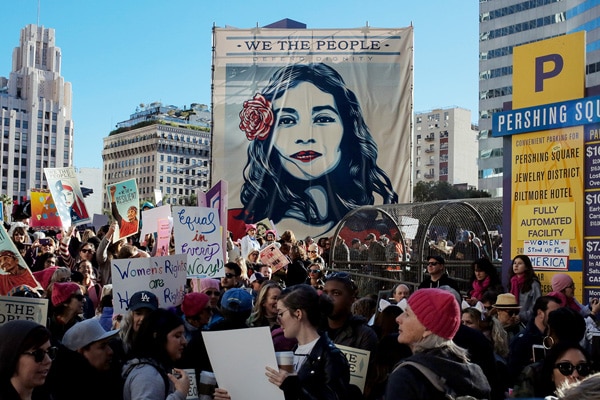
Women’s March in Pershing Square, Los Angeles (Photo by Arlene Mejorado)
Tell us how The Amplifier Foundation was started. What inspired its launch?
The ideas that formed The Amplifier Foundation were born out of a TED talk I did in 2010 and my work on the Pine Ridge Indian Reservation. I didn’t think magazines I’d worked for would include my story because it was an advocacy issue, so I began looking for ways to share beyond publications.
Then it hit me. What if I could get Shepard Fairey, the most prolific street artist of our time, to join me.We could reach new audiences – particularly in the streets – and spread the word about important social justice issues. (Shepard Fairey became well known in 2008 for his iconic “Hope” poster depicting President Obama).
Today, it’s very common to see ads for Budweiser, McDonalds and US Bank in the streets, but not images that can make our world better. We see images that put us to sleep, not wake us up. My thought was to use art for social change and wake people up.
This idea ultimately became the grounds for The Amplifier Foundation. Now, the Foundation includes a whole portfolio of photographers and artists advocating around criminal justice reform, the environment and reclaiming of the American narrative.
Your artist grants are invitation only. What are you typically looking for from the photographers and artists you select? What are you not looking for?
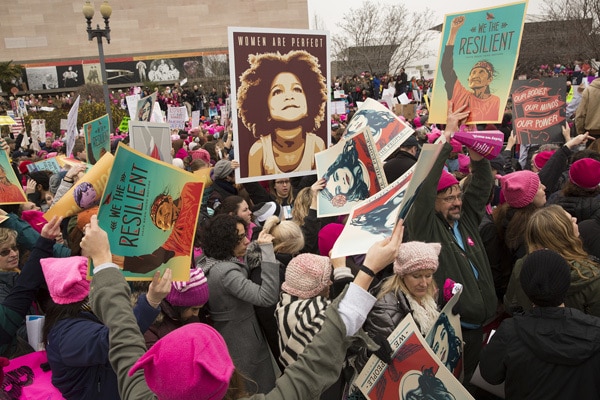
Women’s March distribution (Photo by Aaron Huey)
The first projects we did centered around images I created myself, but this became less necessary. It was clear we just needed inspiring work that could communicate a message. This means that the photos don’t have to be world class and formally beautiful, they just need to carry the spirit of advocacy we’re trying to spread.
In the future, I want to expand my funding for photography that can be used without needing transformation by an illustrator. I’ll be making a grant pool of $50,000, which will likely go to photographers collaborating in one larger group project that we will then help distribute. We’ll announce the details this Spring.
Which piece of art has been downloaded most? Thoughts on why?
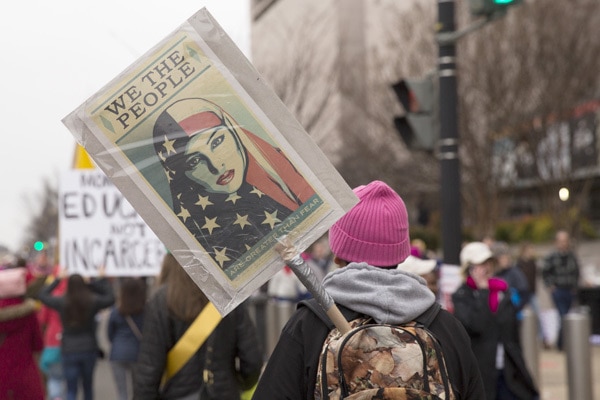
A newspaper turned into a homemade sign at the Women’s March (Photo by Aaron Huey)
“We The People Are Greater Than Fear” has been downloaded the most. I think the reason is because people are scared right now, but they also feel unified. This statement helps us come together under a proclamation that we will rise above the fear. The “We” reminds us that we are not alone and that a new movement is being born — a movement of people ready to show up, do the work, and support and protect each other.
Your Kickstarter campaign raised over $1.3 Million, greatly surpassing your goal of $60,000. What advice do you have for photographers hoping to crowdfund their own projects?

Women’s March in Jackson Hole, Wyoming (Photo by Andy Bardon)
This was easier to crowdfund than a photo book, for example, because its goal was not for personal brand building. The Amplifier Foundation is helping build a movement around art for social change. And all a time when people are looking for movements to join and symbols to hold onto.
We wanted to make a compass that people could look to when they became fearful or tired or lost. This was not born out of the traditional Kickstarter entrepreneur mind, it was born from a desire to bring people together under a common cause. If your crowdfunding campaign can tap into the larger consciousness of a moment in time and provide an outlet for their energy, that will greatly help.
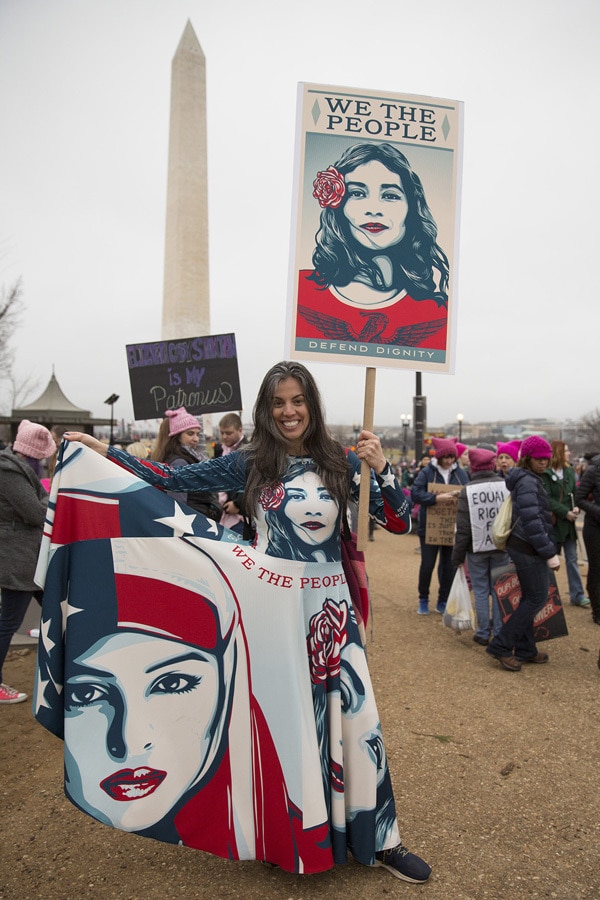
Meaghan DelMonico in a dress made by a fabric artist (Photo by Aaron Huey)
As Executive Director of the Foundation, can you tell us about a moment you felt particularly moved on inspired?
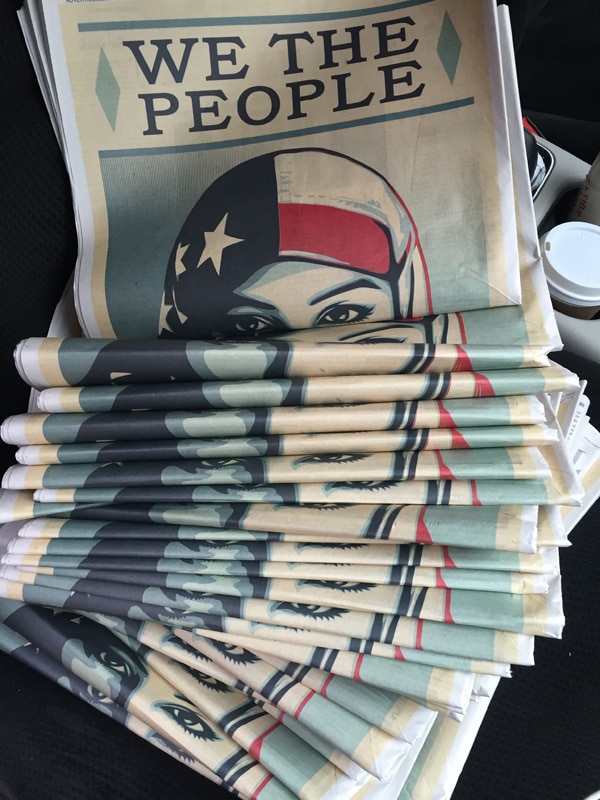
The Washington Post on the morning of Inauguration (Photo by Aaron Huey)
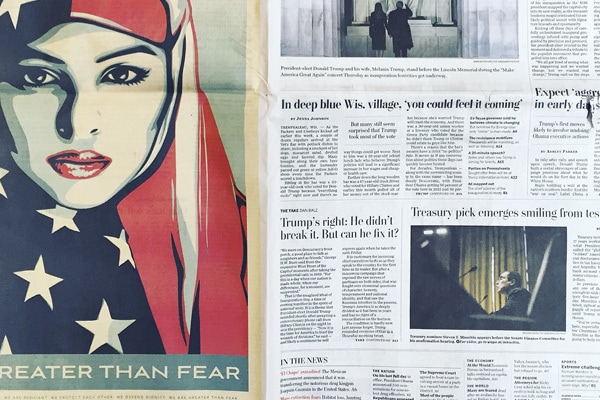
The Washington Post on the morning of Inauguration (Photo by Aaron Huey)
This moment came when I realized that people actually carried our newspapers into the streets by the tens of thousands. Until that moment, everything was just a theory. But then we saw people with newspapers stapled to cardboard signs, pinned to jackets, and holding them above their heads.
The free downloads were printed in 205 countries around the world. We saw the images in nearly all global coverage of the protests, from Columbia to Thailand, Brazil and Kenya. When I saw the first images early one morning around the Brandenburg Gate in Berlin, it made me tear up. I couldn’t believe it.
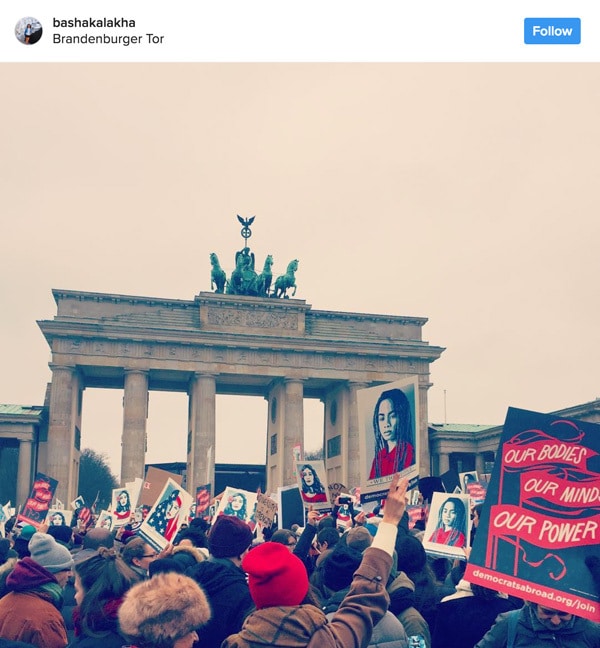
Seen on Instagram of the first sightings in Europe
What’s been the most challenging aspect about running the Foundation?
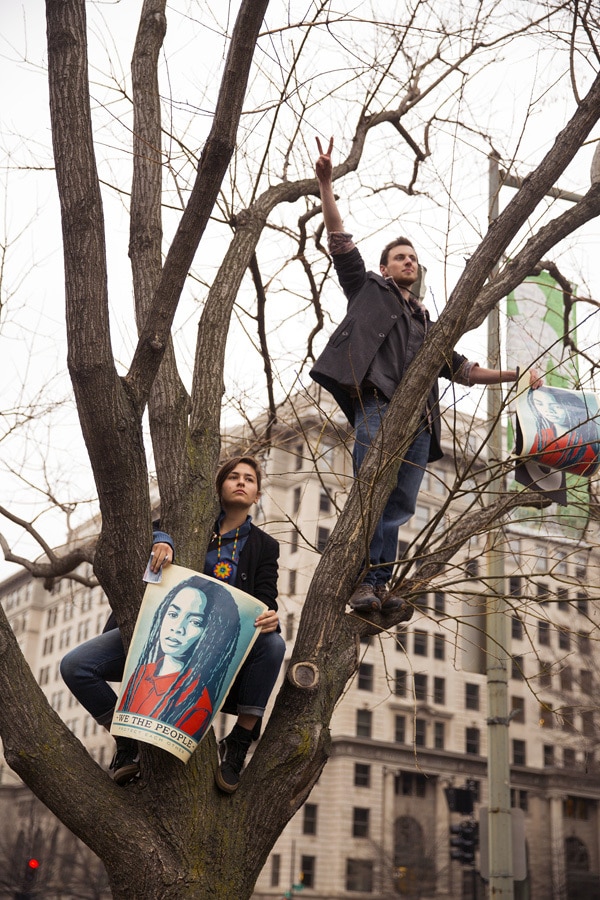
Protesters in a tree at a rally in McPherson Square in DC on Inauguration Day (Photo by Aaron Huey)
Going from an independent creative to running a whole team has been challenging. With the influx of funding and the growing needs of the community right now, we have an obligation to carry this work out with integrity and beauty.
I am working to grow the resources we need, adding new hires and campaign managers so we can give out more grants. More grants mean more artists, and wrangling both the creative and emotional aspects of each artist and campaign is intense. We are dealing with a lot of trauma and energy when working on issues of social justice, oppression and environmental degradation, and we have to do a very careful dance with all of that energy.
Can you give us any insight into the street campaigns and experiments you’re planning this summer? What can we expect?
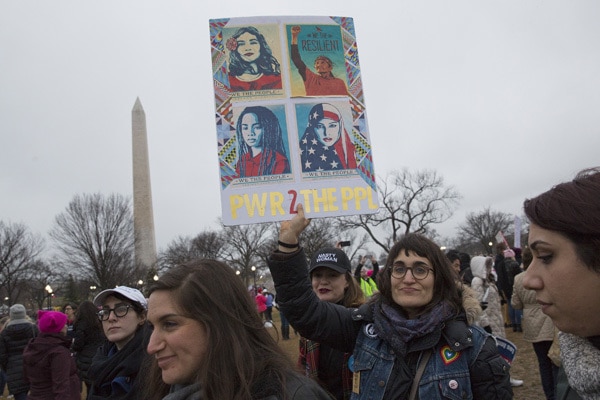
A grid of downloads printed at home, seen at the Women’s March outside The White House (Photo by Aaron Huey)
You can expect so much. Right now, we are setting up an Art Lab in Los Angeles where we will run design thinking workshops with artists, media professionals, organizations, and funders to build the next campaigns. Grants will be provided for these Lab sessions so we can work collaboratively and then leave with a focused mission from a variety of perspectives.
We will also have education campaigns and conduct outreach to schools across the country. People from Stanford are helping us build curriculum around the art for social change we are making. We are already starting to send out free art to any school or library in America that requests it (via wethepeopleare.org).
We will also be doing big ad buys, partnering with ad companies to use parts of their “corporate social responsibility” funds, which most advertisers set aside for non-profit advocacy work. And we want to find more ways to reach people in rural America. We’ll likely be doing town hall events and making quite a few newspaper ad buys in those locations too.
We’ve got lots to do.
Follow The Amplifier Foundation
Website: www.theamplifierfoundation.org
Instagram: www.instagram.com/amplifierfoundation


